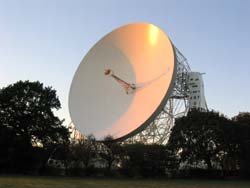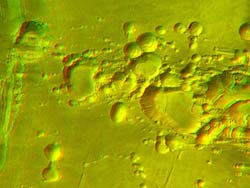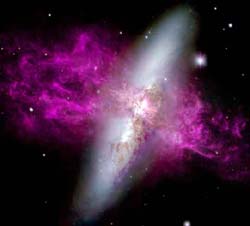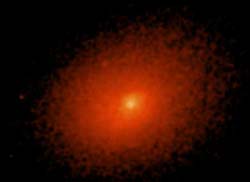This area deals with the fundamental laws and building blocks of nature and how they interact, the properties and the behavior of matter, and research into space and time and their structures.
innovations-report provides in-depth reports and articles on subjects such as astrophysics, laser technologies, nuclear, quantum, particle and solid-state physics, nanotechnologies, planetary research and findings (Mars, Venus) and developments related to the Hubble Telescope.

Work has started today (May 25th) on the construction of an optical fibre network which will connect five radio telescopes to the giant 76-m Lovell Telescope at Jodrell Bank Observatory, operated by The University of Manchester in rural Cheshire, allowing it to operate with vastly improved sensitivity.
This e-MERLIN network will operate as single radio telescope spanning 217 km, with unprecedented sensitivity provided by the enormous data rates carried by the optical fibres. The combination

This image of the Arsia Mons shield volcano was taken by the High Resolution Stereo Camera (HRSC) on board ESA’s Mars Express.
This image shows a spectacular zone of collapse features on the southern flank of the giant shield volcano Arsia Mons (located at 239°E longitude and 10°S latitude, see the Mars map image).
The image was taken from an altitude of about 400 kilometres during orbit 263 of the Mars Express spacecraft.
The original image resolution was 20 metres pe

Like most creation stories, this one is dramatic: we began, not as a mere glimmer buried in an obscure cloud, but instead amidst the glare and turmoil of restless giants.
Or so says a new theory, supported by stunning astronomical images and hard chemical analysis. For years most astronomers have imagined that the Sun and Solar System formed in relative isolation, buried in a quiet, dark corner of a less-than-imposing interstellar cloud. The new theory challenges this conventional wisdom, a

Physicists at Lehigh University achieve supercontinuum generation in nonlinear fibers
Two physicists at Lehigh University have produced a rainbow of visible and invisible colors by focusing laser light in a specially designed optical fiber that confines light in a glass core whose diameter is 40 times smaller than that of a human hair.
Jean Toulouse, professor of physics, and Iavor Veltchev, research associate in Lehigh’s Center for Optical Technologies (COT), are among the

When a galaxy known as M82 had a near-miss with its neighbour, it set off an explosive burst of star formation that sent plumes of hot gas tens of thousands of light years into space. Now a team of UK and American astronomers has discovered that these gas clouds are like the jets from a high pressure shower head.
M82 – which astronomers call a “starburst galaxy” – is located at a distance of a bit more than 10 million light years from our own Milky Way. Dr. Linda Smith, from the Department

Astronomers have detected and probed dark energy by applying a powerful, new method that uses images of galaxy clusters made by NASA’s Chandra X-ray Observatory. The results trace the transition of the expansion of the Universe from a decelerating to an accelerating phase several billion years ago, and give intriguing clues about the nature of dark energy and the fate of the Universe.
“Dark energy is perhaps the biggest mystery in physics,” said Steve Allen of the Institute of Astronomy (Io